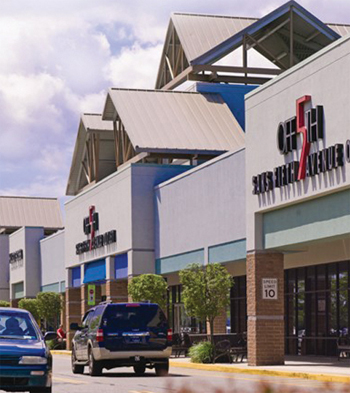The New York Department of State requirements for a real estate license include completion of ten hours of education in commercial real estate, including office and retail space. As I write this article, there are only a few shopping days until Christmas. I thought this would be a good time to address the subject of commercial real estate, specifically retail space across the East End.
As stated in the text book, “Modern Real Estate Practice in New York,” by Sam Irlander, “Retail takes a variety of sizes and forms, anything from one neighborhood store on a residential block, while suburban retail consists of a variety of different retail options.”
 |
|
Tanger outlet Center in Riverhead is a unique retails space onthe East End. (Courtesy Photo) |
Regardless of which type, the obligations of landlords and tenants will be spelled out in the lease. Unlike residential leases, which typically run from one to three years, including the tenant’s right to renew, commercial leases are long-term for example, ten, fifteen, even ninety-nine years.
Retail space comprises two categories: generative, those of planned destinations, such as department stores car dealerships, movie theaters; and suscipient, those that attract passing customers, fast-food restaurants, for instance.
Shopping malls, which vary in size, consist of a large collection of both generative and suscipient retailers. Smith Haven Mall, in Lake Grove, and Bridgehampton Commons, in the Hamptons real estate enclave of Bridgehampton, are examples of relative size. What all shopping malls have in common are anchor stores that attract other retailers to the mall. Whether it’s a Macy’s or a Neiman Marcus depends on the demographics of the area. Proximity of location of other retailers to the anchor store is sought-after space and, therefore, more expensive.
The developer of a shopping mall will try to attract an anchor tenant first, by offering an aggressive rent, lower rather than higher, as an inducement. The cost of this lower rent is passed on to each of the other tenants who will occupy space within the area. If the anchor tenant goes out of business or relocates to another area, the other tenants would want their rent reduced or have the ability to assign their lease to another retailer. Even if the anchor tenant remains, if another tenant is not doing well because it’s product line is not attracting customers they might want to assign their lease. The lease is a contract and will address these issues. Because both landlords and tenants enter into long-term contractual commitments, each tries to anticipate what may happen in the future and provide for their occurrences.
Discount outlet centers, such as Tanger Outlets in Riverhead, carry a less expensive product line and therefore their rents are cheaper than their more expensive counter parts. In either case, the goal of the developer-landlord is to assure than whatever costs it incurs is born by the tenants, including a return on investment. The goal of the tenant is to operate its business in an environment that will enable it to meet its costs and make a profit on its investment. The negotiations between the two are arm’s-length transactions, each attempting to do the best for him or herself. True, but the success of one depends fundamentally on the success of the other, and, like all contractual relationships, must be entered into in good faith. And because of their complexity should be drawn up by professionals proficient in commercial leasing.
Happy Holidays to each and every one of you.






